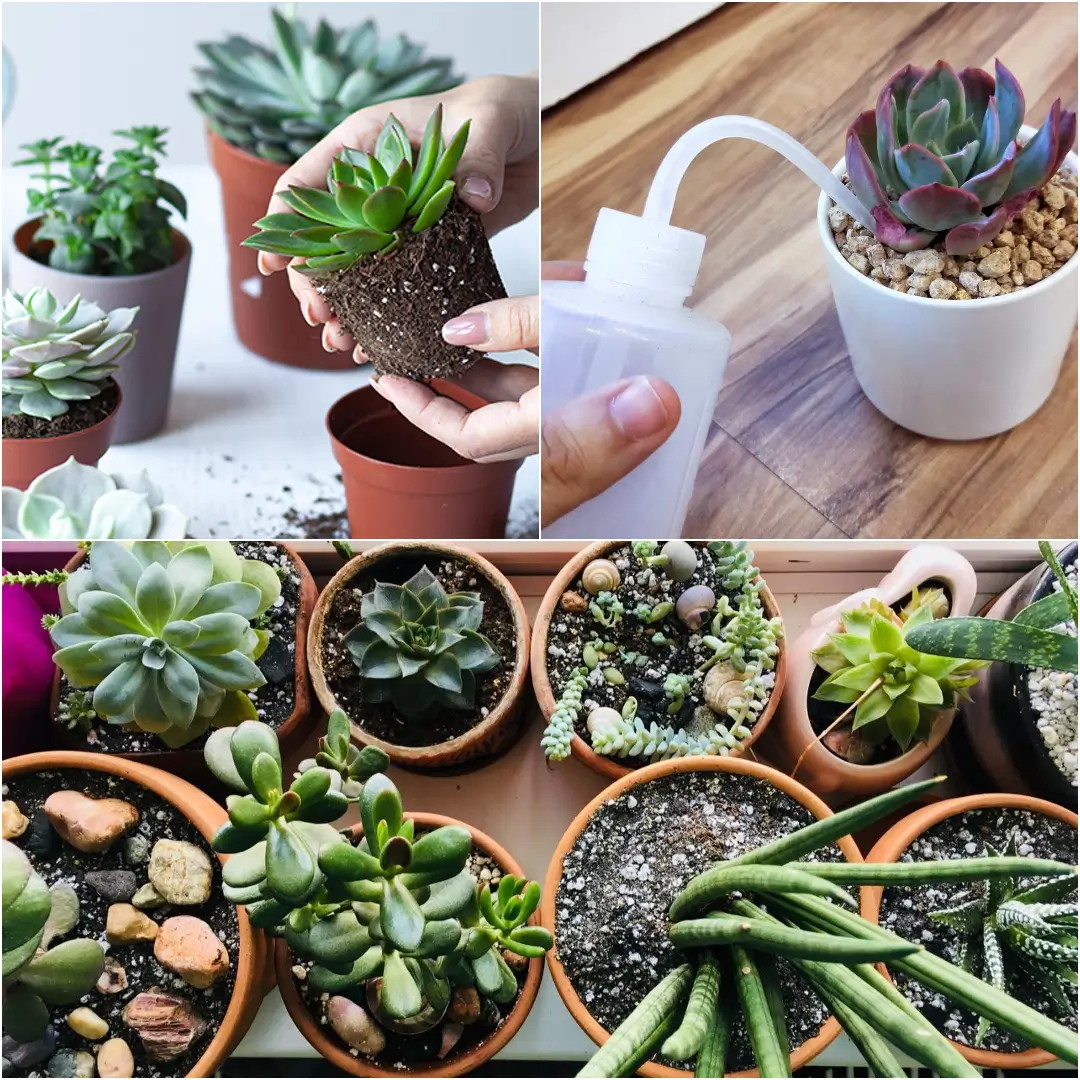For succulents, understanding how to care for them is essential to keeping them healthy and vibrant. Succulents have become the darlings of indoor gardening, gracing homes with their unique beauty and low-maintenance requirements. But don’t let their easygoing reputation fool you; in this guide, we’ll explore everything you need to know about succulent care, from light and watering to pest control and fertilization. So, grab your favorite succulent, and let’s dive into the world of these enchanting plants!
The Importance of Care
When you bring a succulent into your home, you’re not just adding a pretty decoration; you’re inviting a living being that can significantly enhance your space’s ambiance. But just like any other plant, succulents have specific needs. Knowing how to care for succulents not only impacts their health but also influences the joy and satisfaction they bring into your life.
Imagine coming home after a long day and being greeted by the sight of your flourishing succulents. Their plump leaves and vibrant colors can instantly lift your mood. But this satisfaction doesn’t just happen by chance. It stems from understanding and fulfilling their basic requirements.
Basic Care Tips for Succulents
1. Light Requirements
Light is one of the most critical factors in succulent care. These plants thrive in bright environments, needing about six hours of sunlight per day. However, not all succulents are created equal. Some prefer indirect light, while others can handle direct sunlight.
Introducing Light Gradually
If you’ve just adopted a succulent, particularly a newly planted one, it’s crucial to introduce it to full sun exposure gradually. Think of it like a sunbather easing into the waves—too much direct sunlight too soon can lead to scorching. A sheer curtain can work wonders, allowing your plant to soak up light without getting burned.
2. Rotate Succulents Frequently
Have you ever noticed that one side of your plant looks healthier than the other? This phenomenon happens when succulents sit in the same spot for too long. They tend to lean toward the light source, leaving one side in the shadows.
Solution: Rotate your succulents regularly! This simple action helps ensure that every part of the plant receives adequate light, promoting even growth and preventing those awkward lean angles.
3. Watering Schedule
Watering succulents can be a bit tricky, especially if you’re new to the gardening game. Here’s the golden rule: water according to the season. During the spring and summer, succulents are actively growing, which means they need more water. In contrast, their water requirements drop significantly in the fall and winter.
Testing the Soil
A great way to determine when to water is by testing the soil with your finger. If the top 1.25 inches feels dry, it’s time for a drink. Remember, allowing the soil to dry out between waterings is crucial. Over-watering can lead to root rot, which is like a death sentence for succulents!
4. Container Selection
Choosing the right container is another essential aspect of succulent care. Look for pots with drainage holes to prevent waterlogging. Why? Succulents don’t like sitting in soggy soil; it’s like putting a cat in water—utterly disastrous!
Terra-cotta pots are a fantastic choice for beginners. They are porous, allowing excess moisture to evaporate, which helps prevent overwatering. As you become more experienced, you might experiment with terrariums or decorative containers.
5. Soil Requirements
Just as not all containers are created equal, neither are all soils. Succulents require well-draining soil. Regular potting soil simply won’t cut it. Think of it this way: if you were to put a fish in a bowl filled with dirt, it wouldn’t thrive.
You have a couple of options for soil. You can purchase a pre-mixed succulent or cactus soil from your local garden center. Alternatively, if you’re feeling crafty, create your own mix by combining potting soil with sand, pumice, or perlite. This ensures good drainage while providing your plants with the nutrients they need.
6. Watering Technique
Now that you’ve chosen your soil and container, let’s talk about watering technique. When you water your succulents, ensure you water directly into the soil until it runs out of the drainage holes. This thorough soaking encourages deep root growth.
Avoid using a spray bottle! Misting can cause brittle roots and moldy leaves, which are the last things you want in your plant care regimen. If you prefer, you can place the pot in a pan of water, allowing it to soak from the bottom up. Once the top of the soil feels moist, remove the pot from the pan.
7. Cleaning Your Succulents
Just like any other surface in your home, your succulents can gather dust. While they might look charmingly rustic, accumulated dust can inhibit growth. Regular cleaning is essential to keep your plants happy.
Use a damp cloth to gently wipe the leaves and spines. For hard-to-reach spots, a soft paintbrush works wonders. It’s a bit like giving your plants a spa day—every succulent deserves a little pampering!
8. Pest Control
Ah, pests—the unwelcome guests in any indoor garden. Fortunately, succulents are less prone to infestations than other houseplants. However, you might occasionally encounter pests like gnats and mealybugs.
Gnats are usually attracted to overly wet soil. To prevent them from crashing the party, ensure you’re not overwatering. On the other hand, mealybugs often appear due to overwatering and over-fertilizing. If you notice these little pests, isolate the affected plants and spray them with 70 percent isopropyl alcohol to eliminate the infestation.
9. Fertilizing Your Succulents
Fertilizing succulents can feel like walking a tightrope. They don’t require much, but a light feeding during the growing season (spring and summer) can be beneficial. The trick is to avoid over-fertilizing—too much fertilizer can lead to rapid growth that weakens the plant.
As a rule of thumb, always check the recommended amount on your fertilizer’s packaging, and use half that amount for your succulents. Think of it as giving them a light snack rather than a full-course meal!
Caring for succulents can be a rewarding and enjoyable experience. These unique plants can bring joy and tranquility into your home if you provide the right light, water, soil, and care. By understanding their specific needs and following the tips outlined in this guide, you can ensure that your succulents not only survive but thrive.
So, whether you’re a seasoned plant parent or just starting your indoor gardening journey, remember: with a little knowledge and care, your succulents can become the stars of your home. Happy gardening!
FAQs
1. How do you keep succulents alive indoors?
To keep succulents alive indoors, ensure they receive enough bright, indirect sunlight for about six hours a day. Water them when the top 1.25 inches of soil are dry, and use well-draining soil in pots with drainage holes to prevent root rot.
2. How often do you water a succulent?
Watering frequency depends on the season. In spring and summer, water your succulents more frequently, approximately every week or two, depending on humidity and temperature. In fall and winter, reduce watering to every few weeks.
3. Do succulents need direct sunlight?
Most succulents prefer bright, indirect sunlight. However, they can tolerate direct sunlight for a few hours a day. If you’re placing them in direct sunlight, be cautious about sudden exposure to prevent scorching.
4. How do you take care of potted succulents?
To care for potted succulents, choose well-draining soil and pots with drainage holes. Provide ample light, and water only when the soil is dry to the touch. Regularly clean the leaves, monitor for pests, and fertilize lightly during the growing season.


